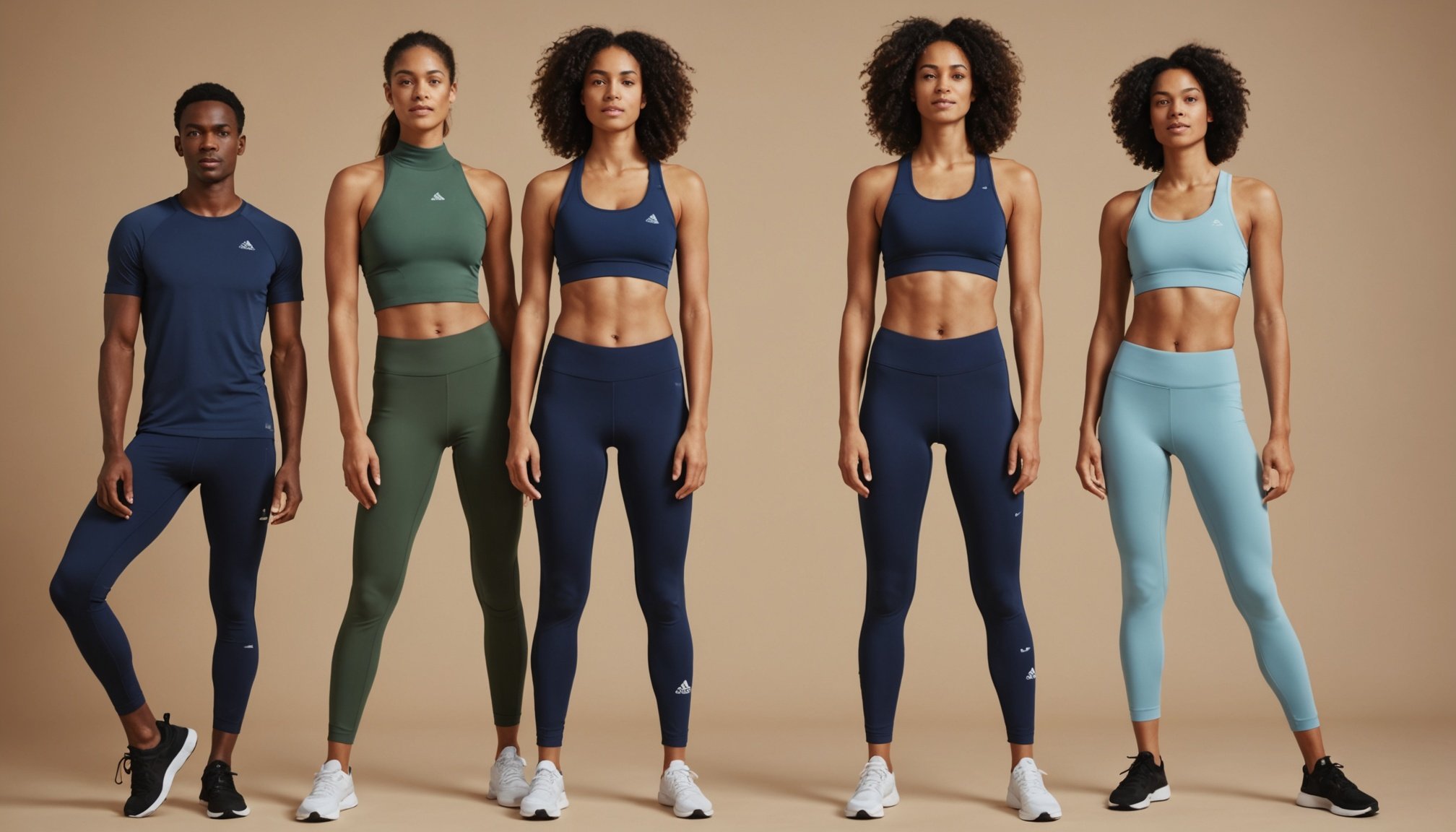Overview of Sustainable Activewear
Sustainable activewear is more than just a trend. It represents a commitment to reducing the environmental impact of clothing production. By using eco-friendly materials and processes, sustainable activewear aims to protect our planet while offering high-performance gear. Eco-friendly clothing is crafted with the environment and consumer health in mind, often using materials such as organic cotton, recycled polyester, and Tencel. These sustainable textiles do less harm to the Earth compared to conventional fabrics that rely heavily on water, chemicals, and energy.
The importance of sustainable activewear cannot be understated. It allows consumers to make choices that benefit both themselves and the environment. There are multiple benefits that extend beyond just environmental impact. For instance, eco-friendly activewear often contains fewer allergens and toxins, promoting better skin health for users. Moreover, investing in sustainable options supports responsible production practices, helping to encourage eco-conscious companies to thrive. By choosing sustainable activewear, consumers can contribute to a larger movement toward ethical and environmentally responsible fashion, thus making a positive difference for the planet and future generations.
Also to see : Mastering the art of styling sequin tops: your go-to guide for festive celebrations in the uk
Key Eco-Friendly Fabrics Used in Activewear
Sustainable activewear often incorporates eco-friendly fabrics that are both innovative and environmentally conscious. These materials are designed to balance performance and sustainability without compromising on quality.
Organic Cotton
Organic cotton is a popular choice in sustainable textiles due to its biodegradable nature. Unlike conventional cotton, organic varieties are grown without toxic chemicals or pesticides, reducing harmful runoff into waterways. This not only benefits the environment but also supports safer farming practices and improves consumer health. Its durability ensures it withstands multiple washes, making it a sustainable choice.
Have you seen this : Expert Fabric Care: Shielding Delicate Textiles from the UK’s Harsh Weather Conditions;234Transform Your Style: Expert UK Tips for Mastering Cap-Sleeve Top Fashion
Recycled Polyester
Another notable fabric is recycled polyester. Created from post-consumer plastic waste, like bottles, this material helps reduce landfill waste and promotes efficient resource use. While it requires less energy to produce than virgin polyester, the challenge lies in its end-of-life processing, as it’s not biodegradable.
Tencel/Lyocell
Tencel, also known as Lyocell, is lauded for its sustainable production. Manufactured using wood pulp from responsibly managed forests, this fabric is biodegradable and excels in moisture management and breathability, making it ideal for activewear. The closed-loop system used in its production minimizes waste, highlighting its environmental advantages. However, it’s essential to verify sourcing practices to ensure its sustainability.
Top Brands for Sustainable Activewear in the UK
In the UK, numerous sustainable fashion brands are making waves by prioritising environmentally responsible production. These eco-conscious companies are known for crafting ethical activewear without compromising on style or function.
Patagonia is prominent for its commitment to sustainability, offering durable gear crafted from recycled materials. Their philosophy supports not just environmental preservation but also ethical manufacturing practices. BAM focuses primarily on bamboo-based products, which are naturally breathable and soil-friendly.
Finisterre, another leader, prioritises durable fabrics and transparency in supply chains. Their product lines often employ recycled polyester and organic cotton, balancing ecological impact and consumer needs. Nu-In provides trendy yet sustainable activewear, aiming for accessible pricing without sacrificing ethical standards.
In choosing these brands, consumers support not only a reduced environmental impact but also a movement toward better social responsibility in fashion. Each brand carries its unique ethos, providing choices that cater to different preferences and lifestyles. Exploring sustainable choices offers insights into the diverse approaches brands take to mitigate their ecological footprint, enriching the overall shopping experience with purpose and consciousness.
Benefits of Choosing Eco-Friendly Fabrics
Opting for eco-friendly fabrics can significantly improve both environmental and personal well-being. Sustainable choices in textiles often result in longer-lasting products, offering tangible benefits to consumers. These fabrics, including organic cotton and recycled polyester, typically contain fewer chemicals, reducing skin irritations and promoting better skin health. This is especially advantageous for individuals with sensitive skin or allergies.
The environmental benefits of switching to eco-friendly materials are profound. By decreasing reliance on conventional resources, these fabrics help reduce the carbon footprint of clothing production. Additionally, durable materials like Tencel are designed to withstand multiple washes, thereby extending the lifespan of clothing and preventing waste.
In terms of cost savings, sustainable fabrics may seem pricier initially but tend to last longer than their traditional counterparts. This durability translates into fewer replacements over time and, consequently, long-term cost savings.
Choosing sustainable options is a deliberate action that contributes to ecological preservation while enhancing consumer lifestyle. Understanding the impact these materials have both on the planet and on personal health encourages more informed and responsible purchasing decisions, reflecting a commitment to a sustainable future.
Where to Purchase Sustainable Activewear
For those aiming to buy eco-friendly activewear, a variety of platforms cater to ethical shopping needs. These online sustainable stores feature eco-conscious brands known for their commitment to reducing environmental impact.
Online Platforms
- Wearth London and Rapanui Clothing are popular options online, offering a wide range of sustainable activewear. They focus on transparency and ethical sourcing, making it easier for consumers to align with their values.
Local UK Shops
- For a more personalised experience, visiting local shops such as The Keep Boutique in London allows consumers to explore options firsthand. These stores often support local and small-scale producers, encouraging community-based sustainability.
Shopping Tips
Finding sustainable options involves recognising key certification labels like GOTS (Global Organic Textile Standard) for organic textiles and Fair Trade for fair labor practices. Look out for brands promising full lifecycle responsibility, ensuring clothes can be reused or recycled easily.
Informed purchasing decisions are crucial, as they enable consumers to contribute to a circular economy, reduce waste, and support ethically-minded businesses. Exploring both online platforms and local shops widens access to sustainable activewear, helping make responsible fashion choices more attainable.
How to Choose Sustainable Activewear Options
Deciding to embrace sustainable activewear involves more than just choosing attractive fabrics. To effectively practice eco-conscious buying, one needs to be informed of several factors. To begin, evaluating the environmental and ethical practices of a brand is crucial. Understanding whether they utilise eco-friendly materials and ensure fair labor practices can significantly impact your decision.
Certification labels such as GOTS (Global Organic Textile Standard) and OEKO-TEX are excellent indicators of sustainable practices. These certifications signify that the products meet specific environmental and safety criteria. For instance, GOTS ensures the organic status of textiles, while OEKO-TEX guarantees that products are free from harmful substances.
When making purchasing decisions, consider the lifespan and durability of the product. Sustainable options often come with higher upfront costs, but their long-lasting nature offers value in the long term. Durable materials not only reduce the frequency of replacements but also minimise waste.
Additionally, focus on transparency as a significant marker of sustainable fashion. Brands providing clear information about their supply chain practices enable consumers to make informed buying decisions. By prioritising these practices, you contribute to ethical fashion and support companies making a positive environmental impact.








